#bitis peringueyi
Text
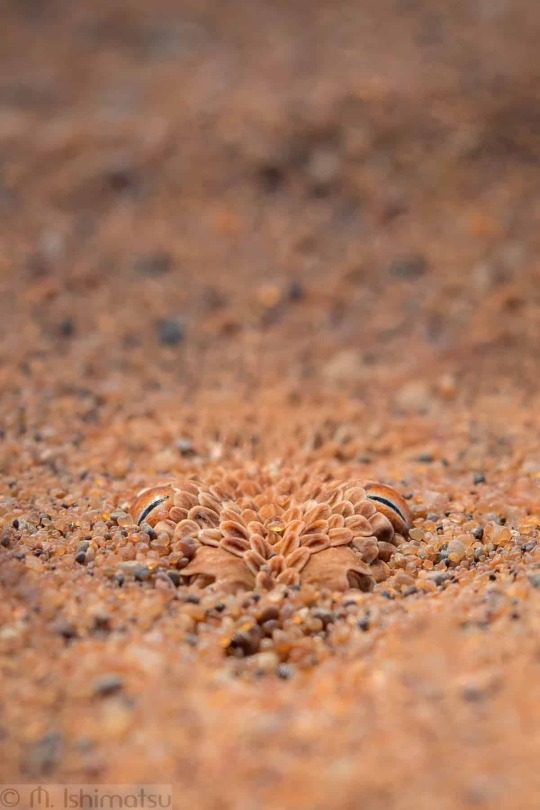
Photographer Spends 10 Days Tracking Down Snakes in Namibia
Peringuey's adder (Bitis peringueyi)
Photographer: Marisa Ishimatsu



#marisa ishimatsu#photographer#namibia#peringuey's adder#adder#snake#reptile#bitis peringueyi#nature
186 notes
·
View notes
Text
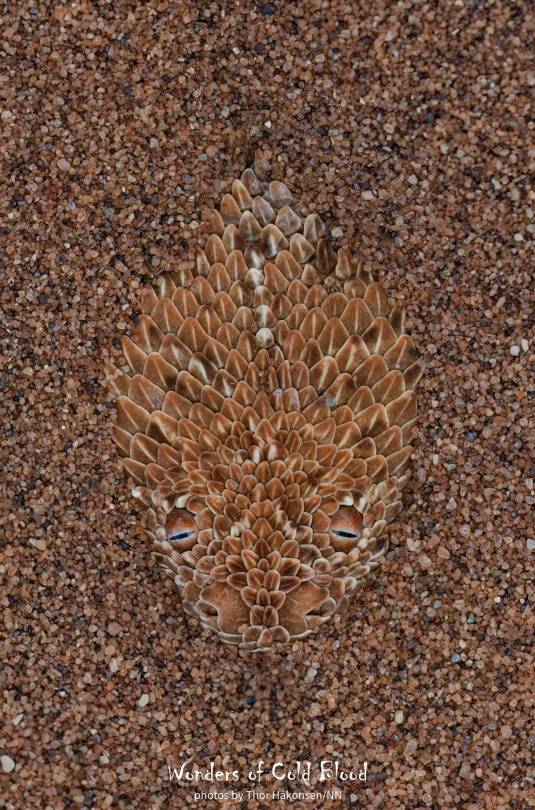
Peringuey's adder (Bitis peringueyi)
Sossusvlei, Namibia
78 notes
·
View notes
Photo

Peringuey’s adder (Bitis peringueyi) buried in the sand at Dorob National Park in Namibia
Aaron Bloch
79 notes
·
View notes
Photo

(Bitis peringueyi) Peringuey’s adder, Dwarf puff adder
Habitat: Confined to dry, sandy coastal areas, particularly sparsely-vegetated wind-blown dunes. The only adder that inhabits the wind-blown sands of the true Namib Desert. Found from Rotkuppe in southern Namibia north to Porto Alexandre in Angola.
Activity and Behavior: Nocturnal; spends day mostly buried in sand w/ top of head, eyes, & tip of tail exposed. Eats mainly sand lizards, sometimes barking geckoes, & gets all its water either from its prey or from droplets of occasional coastal fogs that condense on its flattened body. Females bear 4-10 live young (each 11.5-13.5 cm long)/ litter, in Autumn (Dec.-Apr.). Crawls across sand w/ typical serpentine movements.
Venom Characteristics: Not much known. Venom probably mainly a weak cytotoxin, causing pain & local swelling; not likely to be lethal to humans. No known antivenom currently produced.
32 notes
·
View notes
Photo
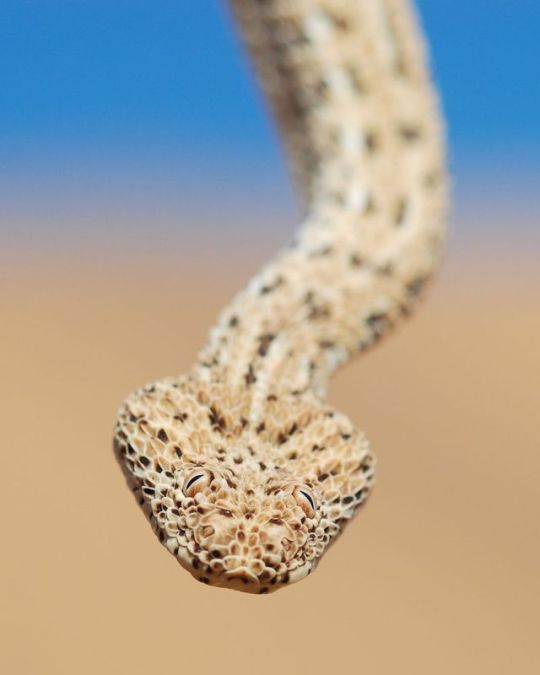
Dwarf Sand Adder
Bitis peringueyi
#bitis peringueyi#bitis#dwarf sand adder#sand adder#adder#snake#serpent#serpentes#scales#reptile#reptilia#herp#herpetology#zoology#wildlife#wildlife biology#animal#animalia#viperidae#viper#squamate#squamata#ectotherm#derp#venomous
49 notes
·
View notes
Photo

A Tractrac sitting nearly on top of a Sidewinder (Bitis peringueyi), not knowing it is hiding there. (Pic credit - Chantelle Bosch)
Source: https://bit.ly/3921SD8
218 notes
·
View notes
Photo
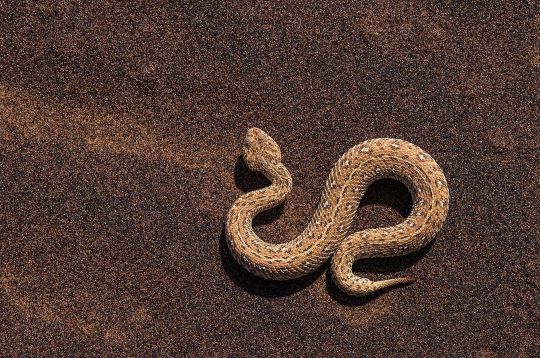
Damn I miss Namibia and damn double I miss Peringuey’s adders (Bitis peringueyi) slithering on the dunes of the coastal desert! Shot with Nikon D850 a while ago while on tour with @phillipconradie.wildlifephoto and @thenaturalistcollection #bitis #africa #snake #herps #herping #herpsofinstagram #peringuey #namibia #namib @ilcp_photographers https://www.instagram.com/p/CW_TRfZKijw/?utm_medium=tumblr
5 notes
·
View notes
Photo

Todays Snake Is:
The Peringuey’s Adder or Namibian Sidewinder (Bitis peringueyi) is a venomous snake native to Namibia and Angola. These snakes are ambush hunters and will bury themselves in the sand in wait of prey such as lizards, luring them with the black tips of their tails. They are well-adapted for life in the desert, as demonstrated by their high-set eyes, which allow them to see even when otherwise below the surface.
(x)
87 notes
·
View notes
Photo

'Peringuey’s adder / Bitis peringueyi' by Matthijs Kuijpers on Flickr
#Peringueys adder#bitis peringueyi#adders#snakes#reptiles#herp#herpetology#animals#desert animals#wildlife#nature
215 notes
·
View notes
Photo

(Bitis peringueyi) Peringuey’s adder, Peringuey’s desert adder, sidewinding adder
Habitat: Confined to dry, sandy coastal areas, particularly sparsely-vegetated wind-blown dunes. The only adder that inhabits the wind-blown sands of the true Namib Desert. Found from Rotkuppe in southern Namibia north to Porto Alexandre in Angola.
Activity and Behavior: Nocturnal; spends day mostly buried in sand w/ top of head, eyes, & tip of tail exposed. Eats mainly sand lizards, sometimes barking geckoes, & gets all its water either from its prey or from droplets of occasional coastal fogs that condense on its flattened body. Females bear 4-10 live young (each 11.5-13.5 cm long)/ litter, in Autumn (Dec.-Apr.). Crawls across sand w/ typical serpentine movements.
Venom Characteristics: Not much known. Venom probably mainly a weak cytotoxin, causing pain & local swelling; not likely to be lethal to humans. No known antivenom currently produced.
#Bitis peringueyi#Bitis#Peringuey’s adder#adder#snake#nature#earth#reptile#venomous#Viperidae#Viperinae#animals#viper#Old World viper
173 notes
·
View notes
Photo

(Bitis peringueyi) Peringuey’s adder, Dwarf puff adder, Zwergpuffotter, Namib viper
Not much known. Venom probably mainly a weak cytotoxin, causing pain & local swelling; not likely to be lethal to humans. No known antivenom currently produced.
#Viperinae#snake#viper#nature#earth#reptile#venomous#Viperidae#animals#Namib viper#Dwarf puff adder#Peringuey’s adder#Bitis peringueyi#Bitis
119 notes
·
View notes
Photo
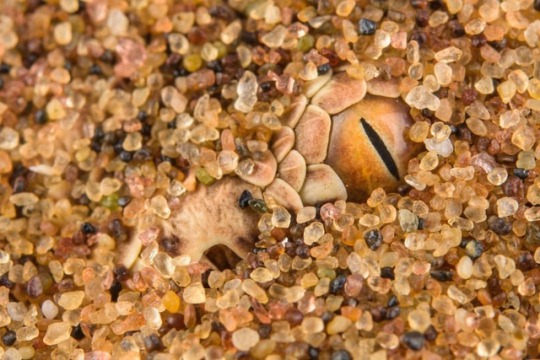
With all this water pouring down from the sky, my mind flies to my beloved Namibia and all the unique wildlife living on its dunes. Here a Bitis peringueyi is waiting for a lizard to pass by and lounge at it, with only it's nose and eyes popping out of the sand. #namibia #namib #desert #macro #nikonphotography #camouflage #1frame4nature #1f4n #swakopmund @ilcp_photographers (presso Swakopmund, Namibia)
1 note
·
View note